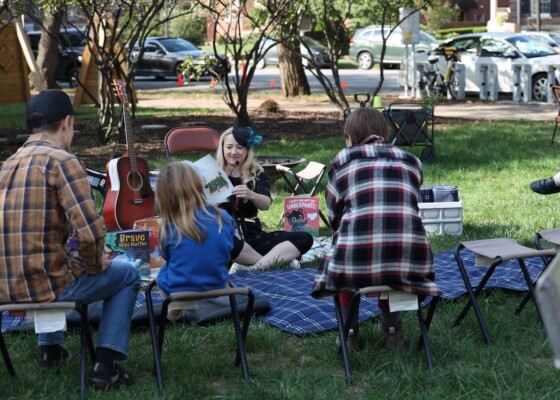Six Things We Learned about Urban Parks & Greenspaces at #Fairbanks17
March 7, 2017On Friday, March 3, we partnered with the University of Indianapolis for the fourth annual Richard M. Fairbanks Symposium on Civic Leadership. Together with UIndy’s Institute for Civic Leadership and…
On Friday, March 3, we partnered with the University of Indianapolis for the fourth annual Richard M. Fairbanks Symposium on Civic Leadership. Together with UIndy’s Institute for Civic Leadership and Mayoral Archives, Keep Indianapolis Beautiful and Indy Parks, we explored the ways greenspaces and parks contribute to a vibrant city.
A day of so much passion and energy left us with many takeaways. Here are our top six:
- Great cities aren’t smart cities, they’re “learning cities.” During the kick-off INconversation, Justin Garrett Moore and Neelay Bhatt talked about using design and data thoughtfully to make the most of greenspaces. Moore, an Indy native who serves as the current director of New York City’s Public Design Commission, encouraged neighbors to create “urban patches”—small interventions, be they murals, pocket parks or trail connections, that solve big problems. City leaders could overlay maps of crime stats, educational outcomes, health and poverty indicators to see where the strategic use of greenspace might address social challenges. We might start by learning from peer cities, whose per capita spending on parks (national average, $76) far outpaces Indy ($26).
- Despite Indy’s low parks spending, we get a lot of bang for our buck. A half million kids get free lunches over the summer, more than 1,000 classes and programs are offered annually, and there are 210 parks and 135 miles of trails to explore.
- Indianapolis has a long history of greenspace planning, going back to George Kessler’s original 1908 plan. Kessler’s system of parks and greenways, laid out along the city’s rivers, is a blueprint still being followed today, including in the design of White River State Park. The city made a major leap forward with the creation of the Monon Trail in the 1990s; Brian Payne of the Central Indiana Community Foundation noted that NIMBY (Not In My Backyard) battles fought under Mayor Stephen Goldsmith largely cleared the way for the success of the Cultural Trail a decade later.
- Lack of density is a challenge for great urban parks. Kessler’s beautiful greenways also contributed to suburbanization by making the city more car-friendly. Today, less than a third of Indy residents live within walking distance of a park. But several speakers called out the recent approval of the mass transit plan as a good start. Neelay Bhatt, of PROS Consulting, pointed to Singapore, where transit lines lead to stadiums surrounded by public parks and trails, as a possible inspiration for the Circle City’s future.
- It’s hard to overstate the legacy of Mayor Bill Hudnut, whose iconic 1970s “Hudnut Hook” commercial inspired Indianapolis to clean up its act. Hudnut, who created the Clean City Committee, was the first mayor to recognize that eliminating litter was important not only for a city’s self-image, but also for the health and well-being of its residents. Re-watch the video and share it with others who care about a green Indy.
- We should pursue the “triple bottom line” as we plan the future of Indy greenspaces. Our final panel shared how great parks yield economic, social and ecological benefits, be it through public-private partnership as with Columbus’s Scioto Mile, Greening of Detroit’s inspiring youth employment program that transforms empty lots from liabilities to assets, or KIB’s big push to plant natives that shore up the base of our food chain.
See photos from the day here and check out #Fairbanks17 on Twitter to catch up on the day’s chatter.


